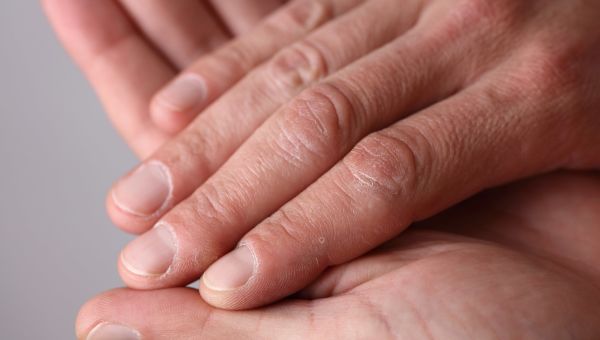5 weird signs of iron deficiency
Learn how to spot some of the unusual symptoms that can arise when your iron levels are low.

There’s a reason iron is listed as an essential nutrient: Your body absolutely requires adequate levels of iron in order to work properly.
A component of red blood cells, iron plays a critical role in transporting oxygen throughout the body and producing the energy used during muscle contractions—including heartbeats. Iron is also important for the production of the immune cells that help your body fight off bacteria and other foreign invaders.
When you don’t have enough iron, your body suffers in a variety of ways. You may have heard of the common symptoms of iron deficiency, like low energy levels and fatigue, headaches, muscle cramps and being unusually pale. You may have even heard of some of the more serious symptoms, which include heart palpitations and infections.
But iron deficiency can also result in several more unusual symptoms. The following are a list of weird ways your body can suffer when it doesn’t have enough iron.

1. Difficulty Sleeping
You would think that a condition that leaves you feeling tired and fatigued would at least let you get some sleep, but unfortunately people with iron deficiency may experience restless leg syndrome, a condition that causes a creeping pins and needles sensation in the legs, resulting in an urge to move the legs. This often occurs at night, which makes it difficult to fall asleep or stay asleep.

2. Wanting to Eat Ice
Pica is a condition where you have the craving to eat non-food items, and pica for eating ice can be a symptom of iron deficiency. Researchers do not fully understand why iron deficiency causes pica, but research shows that pica symptoms often resolve when iron deficiency is addressed.

3. Swollen Tongue
One theory as to why people with iron deficiency crave ice is that ice may feel soothing to another reported symptom of iron deficiency: inflammation of the tongue. Called glossitis, an inflamed tongue due to iron deficiency can have a smooth appearance, can change in color and can be sore or swollen. This is one of the more serious symptoms you should watch out for, as it can lead to difficulty chewing and swallowing. Other oral symptoms may include swollen or cracked lips, cracks in the corners of the mouth and mouth ulcers.

4. Nail Abnormalities
Iron deficiency also impacts the health and appearance of the fingernails and toenails. Patients with very low levels of iron sometimes have “spoon-shaped nails,” which have dips or depressions in the center; the medical term for this is koilonychia. Iron deficiency is also associated with nails that are thin, brittle, and prone to cracking or splitting.

5. Anxiety, Depression and Difficulty Concentrating
Iron is very important to the health of your brain and nervous system, and neurologic symptoms are often the first symptoms to appear when your body’s iron stores are depleted. The outward neurological impacts of iron deficiency vary from person to person: you may experience anxiety, depression, mood swings or difficulty concentrating.

The Good News
While iron deficiency can manifest in a number of symptoms that can wreak havoc on your health and quality of life, it can be treated. If you have any of the symptoms described above, make an appointment with your healthcare provider to discuss how you’re feeling. Your healthcare provider may check your iron levels.
If your iron levels are low, changes in diet may be enough to get your iron levels back to where they need to be or you may be prescribed a supplement. Do not take an iron supplement without the guidance of a healthcare provider, as having iron levels that are too high can pose its own set of health risks.
More On


video

slideshow


video


video
